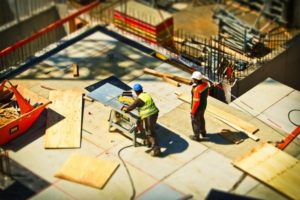
See how ground penetrating radar can help you on your next project.
Modern real estate managers and owners want to renovate their properties to be as appealing to people as possible so that they can earn the most return on their investments. To renovate the property, routing of piping or conduits is a must, and it has to be done without harming any existing structural components.
Fortunately, there is a non-destructive technology available to assess concrete structures. This technology is ground penetrating radar (GPR). GPR is a recently developed tool that makes evaluating concrete structures safe and secure. See how ground penetrating radar can help you on your next project.
Accurate Imaging
Ground-penetrating radar gives you accurate images, and you can analyze pieces of concrete at different depths. You can even get the depth and orientation of embedded items. Before you start drilling, you’ll know for sure what’s beneath the surface.
Ground Penetrating Radar is Non-Invasive
One of the beauties of GPR is that it doesn’t interfere with the landscape much at all. GPR doesn’t damage the area unless destructive testing is necessary. Even in those cases, GPR is great because it can identify the most effective place for testing, which saves you time and money.
Ground Penetrating Radar is Flexible
GPR is a multi-purpose tool. It can mark areas ahead of time before cutting, and coring takes place. It can analyze the structural components of a building. It can give you due-diligence records. It can even assess any deterioration of rebar. This makes ground-penetrating radar highly flexible, so you should be able to find a use for it in many aspects of a construction or renovation project.
Health and Safety
There are many reasons you should prioritize workplace safety. Fortunately, if you use GPR, safety isn’t going to be an issue for you. GPR doesn’t damage the infrastructure, and it doesn’t put anyone on the worksite, or the general public, at risk. GPR can be used safely even when you’re in a crowded environment, so you don’t have to worry about anyone getting hurt.
Difficult Sites
GPR sensors can be used in awkward spots, fitting into tight spaces due to their small size, as well as working on any orientation of wall, ceiling, or floor. Ground-penetrating radar can even find voids in surrounding materials. By using a GPR sensor, you can map out large areas with ease.
Concrete Visions Will Get The Job Done Right
Concrete Visions has been working with clients for over 25 years. Our G&M Services installers are certified with the industry’s major firestop product manufacturers. As part of our firestop service, we can assess abnormal field conditions and, with the manufacturer’s technical support assistance, provide engineering judgments in a timely fashion to comply with contract specifications. Our Field Mechanics undergo ongoing training, including mandatory monthly safety meetings, weekly Toolbox Talks where safety and equipment information is shred, and trainings on safe work standards and safety best practices.
